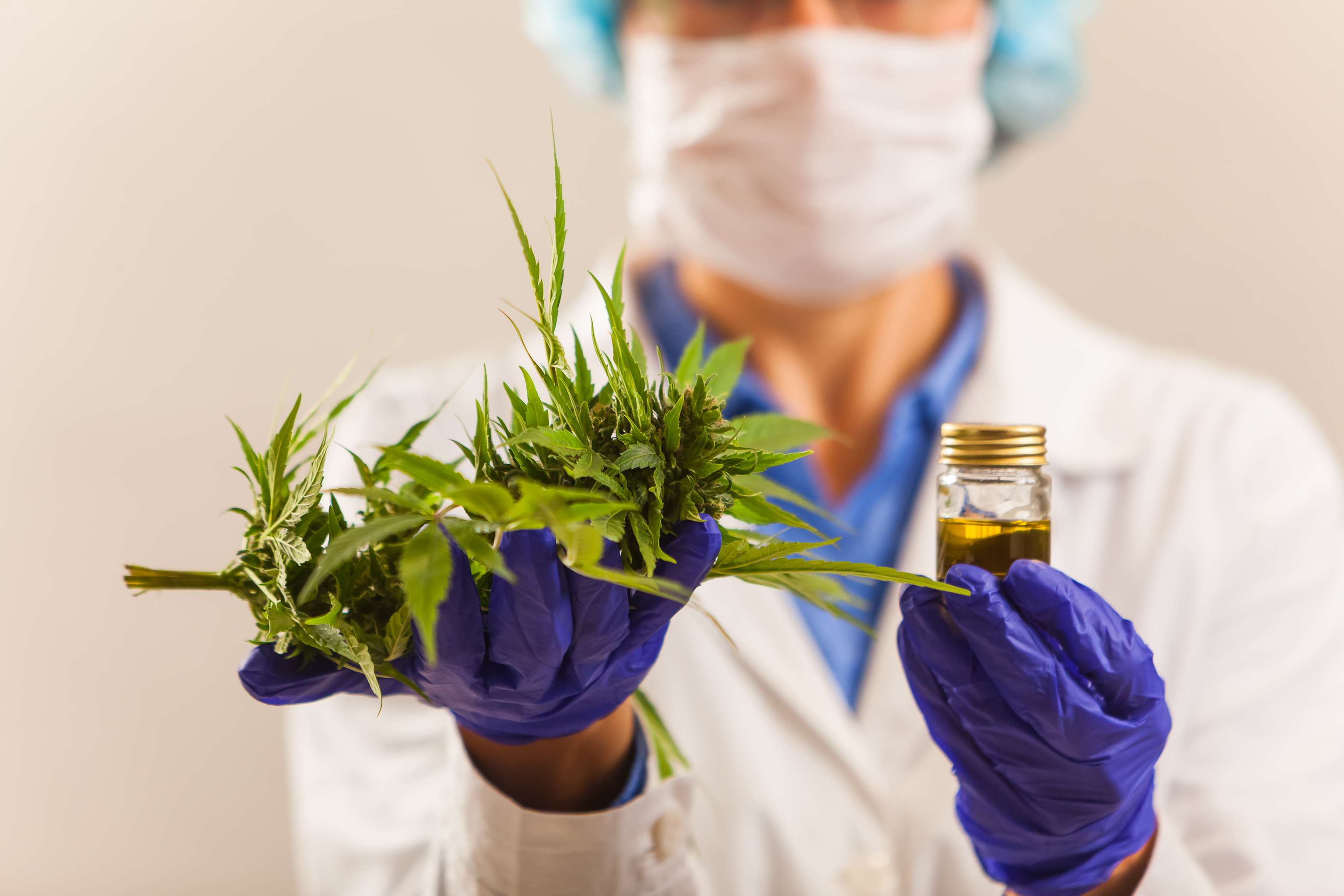Effects of cannabis use when trying to become pregnant

How does cannabis work?
Cannabis belongs to the so-called hemp plants, whereby the intoxicating effect is mainly due to THC (i.e. delta-9-tetrahydrocannabinol). THC has a psychotropic effect and can thus influence the central nervous system and psyche. The dried flowers and flowering leaves of the female cannabis plant (i.e. Cannabis sativa) are used. Further research suggests that cannabinoids may inhibit the release of the neurotransmitter gonadoliberin, which is produced in the hypothalamus. This is involved, among other things, in the receptivity of the human uterus and implantation. Epidemiological research on the topic of cannabis and reproduction has to date largely focused on the effects on newborns.
Therefore, the current American study examined the association of cannabis use during the sensitive phase of pregnancy (i.e., embryogenesis and early fetal period), including prior to conception (i.e., before pregnancy is attempted) and early pregnancy, with fertility, live birth, and pregnancy loss. Use was determined using urine values at multiple time points including self-reports. A possible correlation with reproductive hormones and ovulation was also analyzed.
Note: Compared to Europe, different legal frameworks for cannabis use currently apply in the USA.
The prospective cohort study enrolled 1228 women who were followed for up to six cycles during conception and throughout pregnancy (if they became pregnant) from the year 2006 to 2012.
Prospective analysis:
Here, the researchers analyzed the results of the EAGeRstudy (i.e., Effects of Aspirin in Gestation and Reproduction), a multicenter, randomized, double-blind, placebo-controlled clinical trial. This examined low doses of aspirin before the conception period in 2006-2012. Participants were 18 to 40 years old, actively trying to get pregnant, and had one to two pregnancy losses. Exclusion criteria for the study were alcohol or illicit substance abuse, self-reported significant psychiatric diagnosis including bipolar disorder, schizophrenia, uncontrolled depression, anxiety disorder, and a diagnosis of infertility.
Cannabis use was measured prior to conception, in addition to urinary THC levels during pregnancy and early pregnancy: at baseline, after six months of follow-up or at the beginning of the conception cycle, and at weeks 4 and 8 of pregnancy.
The hormone hCG (i.e. human chorionic gonadotropin), which is produced during pregnancy and is important for the maintenance of pregnancy, was measured prospectively (i.e. predictively) in the study - in addition to the incidence of live births and losses.
Is there a correlation?
According to urine measurements and self-reports, cannabis use prior to pregnancy attempt was 5%. A total of 1.3% of women used cannabis during the first 8 weeks of pregnancy (according to urine measurements). The group with cannabis use before conception recorded a reduced chance of pregnancy of 41% in each monthly cycle, compared with the non-users - although the frequency of sexual intercourse per cycle was higher than in the control group. 42% of participants who used at any time before conception became pregnant - around 66% of women who did not use became pregnant.
No correlations were found between use before trying to conceive and pregnancy loss. However, due to the small sample size, the researchers were unable to measure a correlation between cannabis use during the onset of pregnancy and pregnancy loss.
Conclusion:
Cannabis use prior to conception was associated with lower fertility in women with prior pregnancy loss and increased frequency of intercourse with the goal of pregnancy, according to study results. Due to the small number of users in the study, there was limited ability to also draw inferences for live births and pregnancy losses.
The analysis provides a possible association between cannabis use and potential risks to fertility in women with a history of pregnancy loss. In doing so, the need for further prenatal studies on cannabis use and pregnancy is further substantiated.
Sources
- Cannabis Wirkung (Gesundheit.gv)
- S L Mumford, K S Flannagan, J G Radoc, L A Sjaarda, J R Zolton, T D Metz, T C Plowden, N J Perkins, E A DeVilbiss, V C Andriessen, Purdue-Smithe A.C, K Kim, S F Yisahak, J R Freeman, Z Alkhalaf, R M Silver, E F Schisterman. Cannabis use while trying to conceive: a prospective cohort study evaluating associations with fecundability, live birth and pregnancy loss, Human Reproduction. Volume 36, Issue 5, May 2021, Pages 1405–1415
- Dr Enrique F Schisterman, PhD ; Prof Robert M Silver, MD; Laurie L Lesher, MBA; Prof David Faraggi, PhD; Prof Jean Wactawski-Wende, PhD; Prof Janet M Townsend, MD et al. Preconception low-dose aspirin and pregnancy outcomes: results from the EAGeR randomised trial. The Lancet. Volume 384, Issue 9937, P29-36, JULY 05, 2014. April 02, 2014.
- Paria et al., 1995; Paria et al., 2001; Brown and Dobs, 2002; Brents, 2016; Walker et al., 2019
- Sensible Phasen der Schwangerschaft (Uni Bochum)
- Cannabis senkt Chancen auf Schwangerschaft (Ärzteblatt)

Danilo Glisic
Last updated on 13.09.2021
Your personal medication assistant
Browse our extensive database of medications from A-Z, including effects, side effects, and dosage.
All active ingredients with their effects, applications, and side effects, as well as the medications they are contained in.
Symptoms, causes, and treatments for common diseases and injuries.
The presented content does not replace the original package insert of the medication, especially regarding the dosage and effects of individual products. We cannot assume liability for the accuracy of the data, as the data has been partially converted automatically. Always consult a doctor for diagnoses and other health-related questions.
© medikamio